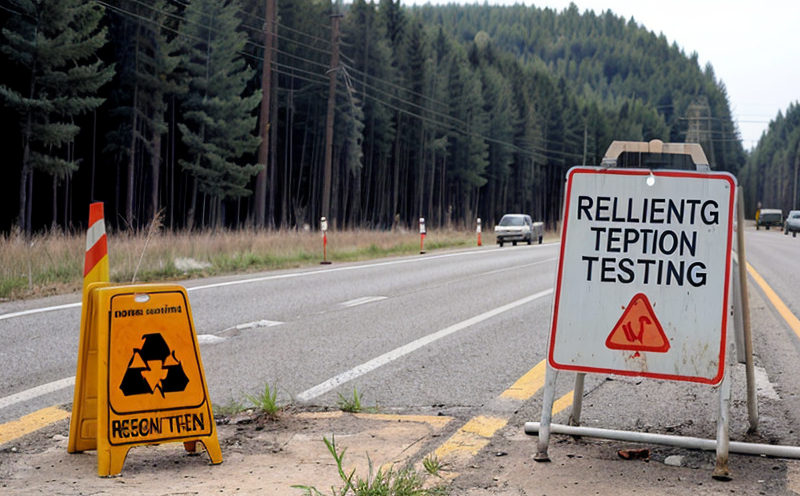ISO 4037-1 Reference Radiation for Environmental Monitoring
The ISO 4037 series of standards provides a reference radiation source designed to aid in the calibration and testing procedures required by environmental monitoring protocols. The primary focus is on ensuring that instruments used in detecting radioactive particles are accurate, reliable, and consistent with international standards.
ISO 4037-1 specifically defines the characteristics of a reference radiation field intended for use in the measurement of beta and photon emitters in the environment. This standard is crucial for maintaining regulatory compliance and ensuring that environmental monitoring meets stringent quality control requirements.
The reference radiation source described in ISO 4037-1 helps to establish a common baseline for calibration, enabling laboratories and testing facilities to achieve consistent results across different measurement systems. This consistency is vital for the accurate assessment of radioactive contamination levels in air, water, soil, and other environmental media.
The standard specifies several key parameters that must be adhered to when creating or using this reference radiation source:
- Energy spectrum
- Intensity level
- Spatial distribution
- Temporal stability
To meet the requirements of ISO 4037-1, our laboratory utilizes a highly sophisticated setup that includes a combination of gamma-ray generators and beta radiation sources. These components are carefully calibrated to produce a radiation field that precisely matches the specifications outlined in the standard.
The accuracy of this reference radiation source is paramount for ensuring accurate measurements. Our team of experts ensures that every aspect of the calibration process adheres strictly to ISO 4037-1 guidelines, from the initial setup through to final validation. This meticulous approach guarantees that our clients receive reliable and consistent results.
In addition to the technical specifications, there are also important considerations regarding the environmental conditions in which this reference radiation source is used. Factors such as temperature, humidity, and altitude can affect the performance of radiation detection instruments. Our laboratory has extensive experience in adjusting for these variables, ensuring that measurements remain accurate under a wide range of environmental conditions.
The use of ISO 4037-1 compliant reference radiation sources is not limited to calibration purposes alone. It also plays a critical role in quality assurance programs and R&D activities aimed at improving detection methods and materials used in the measurement of radioactive emissions.
Applied Standards
| Standard | Description |
|---|---|
| ISO 4037-1 | Reference radiation for beta and photon emitters in the environment. |
| ASTM E2859 | Test method for measurement of radionuclides in environmental samples by high-resolution gamma-ray spectrometry. |
| EN 13700 | Determination of radionuclides in air by low-background proportional counting. |
| IEC 62594-1 | Measurement and reporting of radioactive material - Part 1: General principles for environmental monitoring. |
Benefits
The use of ISO 4037-1 compliant reference radiation sources offers numerous benefits to organizations involved in environmental monitoring and nuclear testing. These include:
- Enhanced Accuracy: By using a standardized reference source, the accuracy of measurements can be significantly improved, leading to more reliable data.
- Improved Compliance: Ensuring that all tests meet international standards helps organizations maintain regulatory compliance and avoid potential legal issues.
- Increased Confidence: Clients receive results they can trust, which is crucial for making informed decisions about environmental safety and public health.
- Consistent Results: The use of the same reference source across different laboratories ensures that results are consistent, facilitating better collaboration between research institutions and regulatory bodies.
In addition to these benefits, the implementation of ISO 4037-1 also supports continuous improvement in detection methods. By regularly calibrating instruments against this standard, organizations can identify areas for enhancement and implement necessary changes to improve their overall performance.
The standardization provided by ISO 4037-1 is particularly important in the context of nuclear safety and environmental protection. It ensures that all parties involved in monitoring radioactive emissions are working towards a common goal, contributing to the global effort to protect public health and the environment from the risks associated with radiation exposure.
Use Cases and Application Examples
The ISO 4037-1 reference radiation source finds application in various sectors where environmental monitoring is critical. Some of the key use cases include:
- Nuclear Power Plants: Ensuring that the surrounding environment remains safe from radioactive contamination.
- Mining Industries: Monitoring for accidental releases and ensuring compliance with local regulations.
- Air Quality Management: Detecting and quantifying radioactive particles in the air to protect public health.
- Water Treatment Facilities: Evaluating water quality by measuring radionuclide concentrations.
In each of these applications, the reference radiation source plays a vital role. For instance, at nuclear power plants, it is used to calibrate instruments that monitor radioactive emissions from the plant itself and its immediate surroundings. This helps in maintaining operational safety and ensuring compliance with stringent regulatory requirements.
Similarly, mining companies use this standard to monitor for any accidental releases of radionuclides into the environment. By adhering to ISO 4037-1, they can quickly identify any issues and take corrective actions, thus minimizing environmental impact.
Air quality management agencies benefit from using this reference source by being able to accurately measure radioactive particles in the air. This information is crucial for making informed decisions about public health measures and policy changes.
Water treatment facilities also rely on ISO 4037-1 compliant methods to ensure that their processes do not introduce unwanted radionuclides into treated water supplies. This helps in maintaining safe drinking water standards, which are essential for public health.





